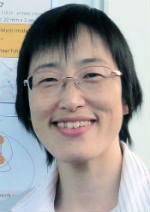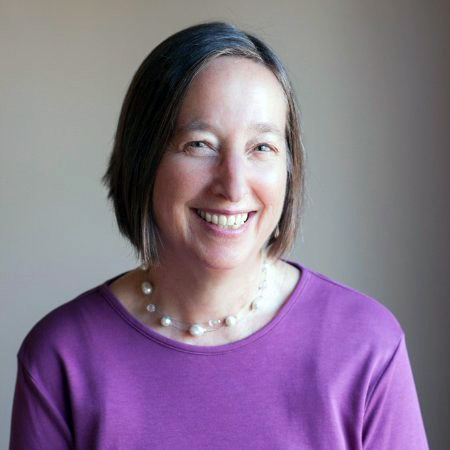Patients and their families contribute to the resilience of healthcare systems. This is particularly evident as global health systems experience increased pressure. Dr. Harumi Kitamura and Carolyn Canfield shared their insights into how we can create environments that invite patient and family contributions to resilient systems in a recent webinar organised by the Resilient Health Care Society.
Inger Johanne Bergerød (UiS), Elizabeth Austin (Macquarie University) and Ruth Baxter (University of Leeds) are responsible for these events. You can read about the last webinar here.
Harumi presented research in which she has empowered patients and their families to develop knowledge, confidence and trust in themselves, in their peers and with health professionals. She pointed to examples of where this has facilitated successful adaptation to disruption and discuss the challenges faced in doing so.
Dr. Harumi Kitamura is an Assistant Professor and Vice Director of the Department of Clinical Quality Management, Osaka University Hospital, Japan. As a nephrologist, she works with patients with chronic kidney diseases, particularly peritoneal dialysis with shared decision-making at the centre of her practice. Harumi is dedicated to patient education, founded a patient group with peritoneal dialysis and held workshops in the World Café style in order to empower peritoneal dialysis patients and to promote their peer-to-peer networking.

Interview with Harumi after the webinar
Do you see interaction among health professionals and families of patients primarily as a service provided, an integrated part of the treatment process, or both?
“Since family member’s support for daily living, including dietary management and mental support, is part of the treatment, I believe that it is part of the integrated care for the healthcare providers to share information with the patient's family, listen to their concerns, and offer advices. But in order to do that, the family has to be present at the doctor's appointment”.
Can this interaction suffer in times of increased pressure in the health system?
“I think so. The interaction between the family members and healthcare providers may be affected by the time availability of the healthcare providers.So, autonomous peer-to-peer (including family members) system is superior as it is not affected by the healthcare pressure.”
Can you define resilience and disruption in layman terms and explain the significance of these terms with a practical example?
“I can‘t define them specifically, but how about looking at patient journey? When considering resilience and disruption in the patient journey, hope and motivation fluctuate dynamically as many factors surrounding life change in complex ways. An example of disruption might be, for example, when a man who had stable blood glucose control worsens when he got to live away from home for work, or when his self-management becomes inadequate due to time spent caring for his family, or when his previous treatment is no longer effective. People with serious illness need a place between home and the hospital, a place where they can talk openly about matters that cannot be resolved by talking to the hospital or family members. I think they especially need a place where they can talk with people who have the same illness. Peer’s true empathy would reduce their anxieties and empower them to move forward with confidence. They’ll find their own way by themselves. P2P would help person with illness move forward more easily, in resilient way. If the hopes and motivations of patients (patient journey) become more stable, it may lead to a more resilient healthcare system, which could reduce the burden and improve the motivation of healthcare providers and reduce the cost of healthcare.”

Speaker Biography: Carolyn Canfield
Carolyn Canfield is an Adjunct Professor Dept of Family Practice at the University of British Columbia. Carolyn works as a citizen-patient across Canada and internationally to expand opportunities for patients, carers and communities to partner with healthcare professionals to transform health systems. Passionate about collaborative excellence, Carolyn carries the patient perspective into the classroom as co-instructor in Patient Safety and Leadership Synergies for first-year medical and nursing students.
Carolyn built on Harumi’s talk, referencing the existing literature on patient and family contributions to resilience. She will give examples of how relationships among patients, their communities, clinicians and their institutions can enhance resilience capacity.
Interview with Carolyn after the webinar
How can the family of patients contribute to resilience?
“First, as a definition, “family” means whoever the patient identifies as their informal, usually unpaid, caregiver and partner through life and/or medical care. The patient can define what responsibilities are appropriate, and what tasks are not to be requested. Family may mean a relative, a friend, a neighbour or a trusted helper. Family caregivers are part of the patient’s care team. They contribute to resilience in the patient’s care environment in the same way that healthcare workers do.”
“Family members are connectors between the patient and the health system to prevent hazardous gaps and to strengthen trust in care relationships. Here are some examples: family members assist the patient in planning and meeting care commitments, bridge care during healthcare worker absences, assist the patient with self-care tasks, share unique information with clinicians and workers, support care team members with timely feedback, amplify patient skills, advocate for the patient, respond to requests on behalf of the patient, navigate with the patient through flawed instructions or processes, and many more. Participating in all of these tasks supplement health worker or patient activities.”
“Bridging functions and overlapping skills are strong drivers for resilience capacity. When you identify how healthcare workers enable resilience in care, consider whether family members offer analogous functions when the worker isn’t present. Also, when a patient has no family or informal caregiver, consider the gaps that make this patient more susceptible to gaps in care that have developed assuming the patient has a willing assistant and advocate at their side. Many care pathways are constructed assuming patients are not alone, but accompanied by a personal understanding helper with few limits to availability and skill to close often invisible gaps.”
“For contributing to system level resilience, family caregivers may be invited to serve as equal partners on teams of healthcare professions. Examples can be found in service design and improvement, evaluation and assessment, ethics and recruiting boards, policy research and impact studies, health professional education and provider governance.”
“In these roles, family caregiver perspectives will contribute to a more complete understanding of the dynamics in which patient care succeeds. With novel “participant-observer” and “outsider-inside” viewpoints, family caregivers participating in provider-side professional environments can also spark innovations that might not otherwise be recognized.”
Do health professionals primarily consider the family of patients as a resource or do we still have some way to go here?
“A patient’s family caregivers are a resource only in the sense that they are undeniably vital links in the patient’s circle of care, just as a medical office assistant or a surgeon or a physiotherapist. The degree to which this version of “team-based care" is recognized and supported varies widely from clinical setting to another, one culture to another. In long term care, some jurisdictions formally acknowledge the governance role of family councils, as an example. In paediatrics, family involvement is essential in every step of care.”
“I would certainly not want to generalize about how all health professionals think! And whatever most clinicians think may certainly not be realized in their practice environment and policy. I don’t think achieving perfection is a useful concept in collaborative teams. Teamwork is not a static attribute. For family caregivers, acknowledgement and ongoing support from professionals in a patient’s circle of care will always require activity.”
Does collaborative excellence demand more of the family of patients?
“You should ask the family member! "Collaborative excellence” is what the partners deem it to be. Generally speaking, we don’t hear family carers complain about too much involvement. Ask a family member about their availability and how they would like to be involved in their loved one’s care. Don’t make assumptions. Being a family caregiver often competes with holding a job, looking after other family members, emotional capacity, travel distance and available time. Make sure the family caregiver knows who else is in the care team and what they do.”
“Design your level of collaboration based on the evidence and agreement gathered from conversations with the family member. Then revisit that assessment often to renegotiate, if needed, as personal circumstances, patient needs and stamina change. As in all relationships, reciprocal respect and generosity go a long way to maintaining bidirectional trust and motivation.”
Text: Eigil Kloster Osmundsen